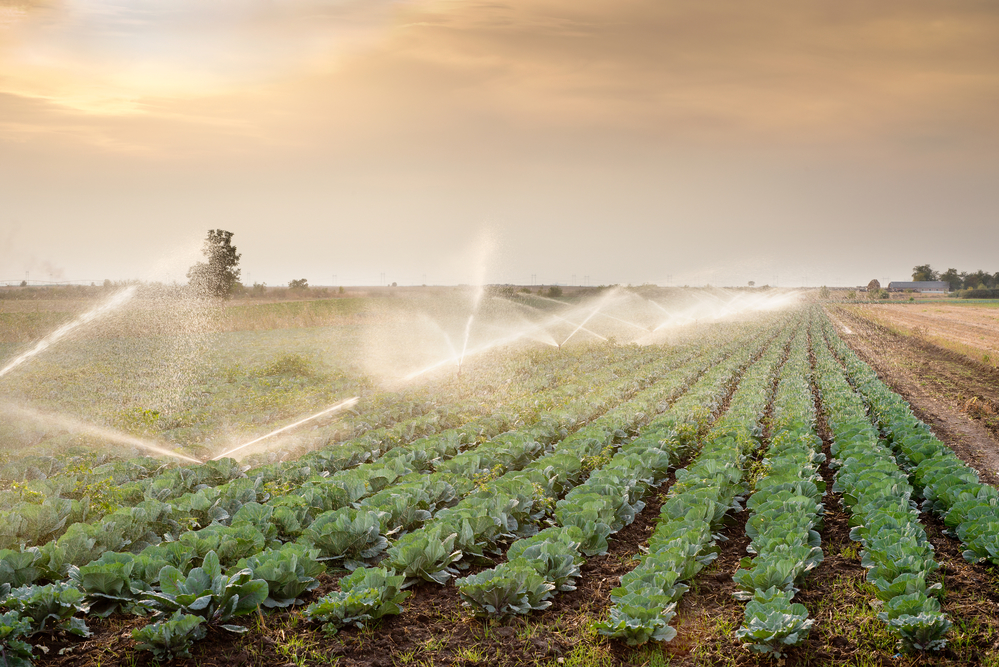The Bureau of Reclamation announced the long-awaited 2017 water allocations for the Central Valley Project contractors. According to the release, south of the Delta contractors are allocated to 65 percent of their contract supply.
The allocation announcement was expected by most in late-February or early-March. The Bureau stated in the release that “As previously announced, Reclamation is taking a unique approach to announcing CVP water allocations,” said Acting Mid-Pacific Regional Director Pablo Arroyave. “In February, we notified the Refuge Contractors, San Joaquin River Exchange Contractors, and Sacramento River Settlement Contractors that, since this is not a Shasta Critical Year, they will receive 100 percent of their contract supply. We then provided additional allocations on February 28. Now, following DWR’s March 1 snow survey and completion of runoff forecasts, we are able to announce the remainder of the CVP contractors’ allocations. While this allocation approach was warranted for this water year, in future years Reclamation will continue to strive to release initial allocations for all water users in February.” Read the full release from the Bureau of Reclamation.
Many groups are upset over the announcement, not only because a number closer 100 was expected after this historically wet winter, but because the timing of the release is well after many growers have planned for the upcoming season.
Fresno County Farm Bureau issues statement on water supply for County’s Westside federal contractors
Statement by CEO Ryan Jacobsen:
“In a snowpack season containing somewhere near 140% of normal in Northern California, there is no reasonable explanation to how an announcement of a 65% allocation makes sense. Delta outflows have well exceeded 25 million acre feet since October 2016, with that number growing by the day. San Luis Reservoir is full. Is the writing on the wall for the future of Valley agriculture when even in a bonanza rainfall year we cannot receive a fulfilment of our contracted water?
“For five years, the public has been told the historic drought is the reason for the dismal water allocations given to Valley farmers. This precipitation season shows that is far from the truth. Regulatory strangleholds continue to cut off water from this region which reduces jobs and prosperity.
‘It is our hope that the contrast of this bountiful water year with the poor allocation received by growers catches the attention of President Donald Trump, Interior Secretary Ryan Zinke and that of our two California Senators, Dianne Feinstein and Kamala Harris. Federal water policy is failing this region. It has failed to protect fish species, and, most importantly, it has failed to provide water to the communities and businesses.”
Statement from Westlands Water District on Bureau of Reclamation’s Initial Water Supply Allocation
FRESNO, CA – Any person not intimately familiar with the constraints on operations of the Central Valley Project (CVP) imposed by the Endangered Species Act and other federal laws, would expect that all water contractors would this year receive a 100 percent allocation. With a near record-setting year of rainfall, runoff, and snowpack, anything less would be indefensible. Remarkably, the Bureau of Reclamation did not announce a full allocation but instead announced a 2017 initial water allocation announcement of 65 percent for South-of-Delta Central Valley Project agricultural contract water districts.
If a 100 percent allocation is not possible this year, when, if ever, would a 100 percent allocation be possible? After all, the public has been told repeatedly that low allocations are due to drought, not regulations. But this year is proof that such assertions are false.
Westlands Water District is thankful that the Bureau of Reclamation’s initial water allocation provides a significant amount of water this year. But that appreciation is framed by two consecutive years of zero water followed by 5 percent being available from the CVP. In the context of sound water resource management, a 65 percent allocation approaches the unbelievable, given the amount of water available in the system. This allocation will compel farmers to continue to rely on groundwater, at a time when sound principles of conjunctive use would otherwise demand that groundwater not be pumped.
The announcement is particularly disappointing in light of the fact that the allocation was delayed well into the planting season, forcing growers to make decisions about hiring, business operations, and land use without any certainty of water resources.
Given the near-record snowpack and water storage levels, a 65 percent allocation demonstrates that current operational constraints, regulations, and punitive laws have hamstrung the CVP’s ability to provide water to California communities. The partial allocation is evidence for the need to change the laws governing water deliveries. We urge our elected officials to work with federal and state agencies to seek long-term solutions that will achieve the original purpose of the CVP and provide a healthy water supply for future generations.











